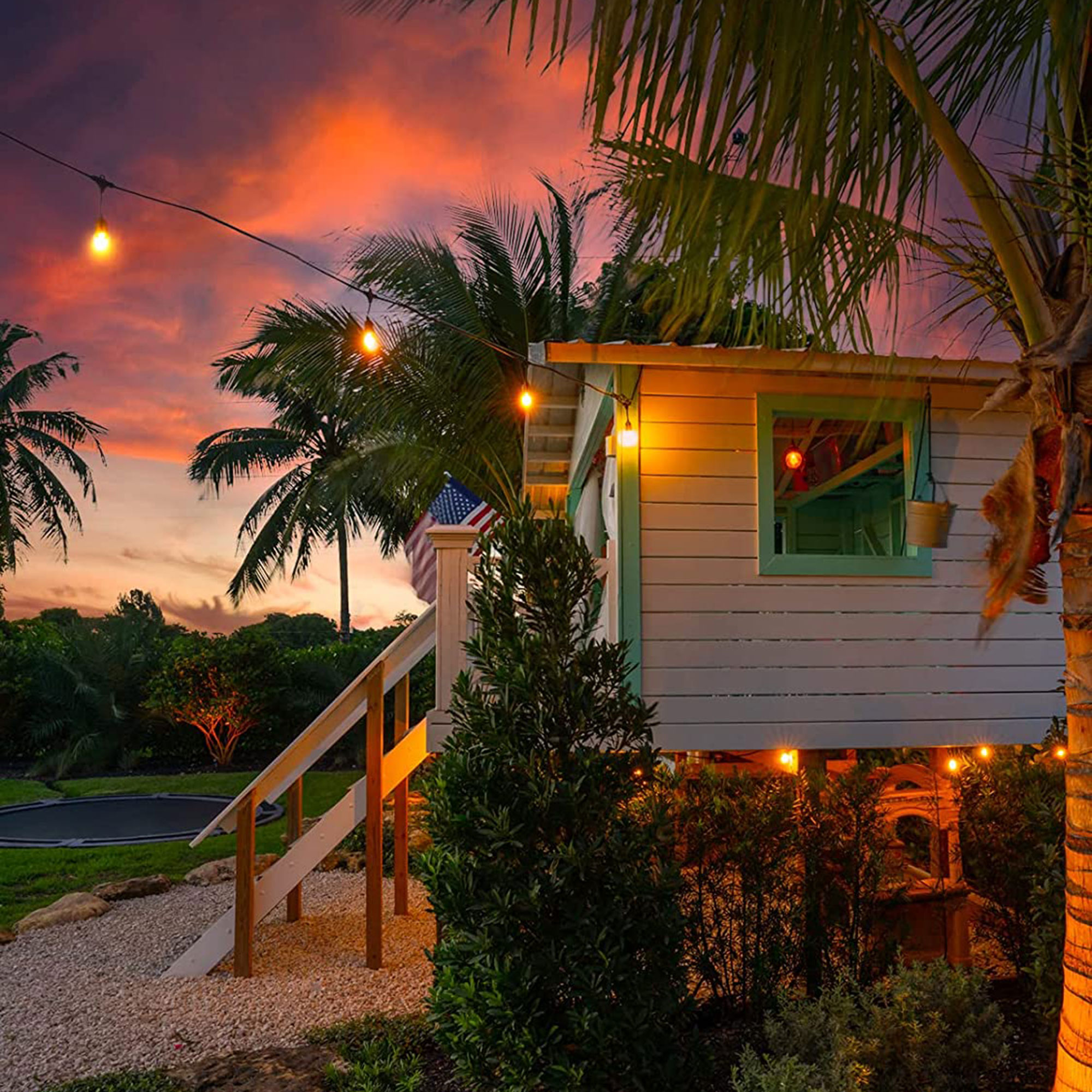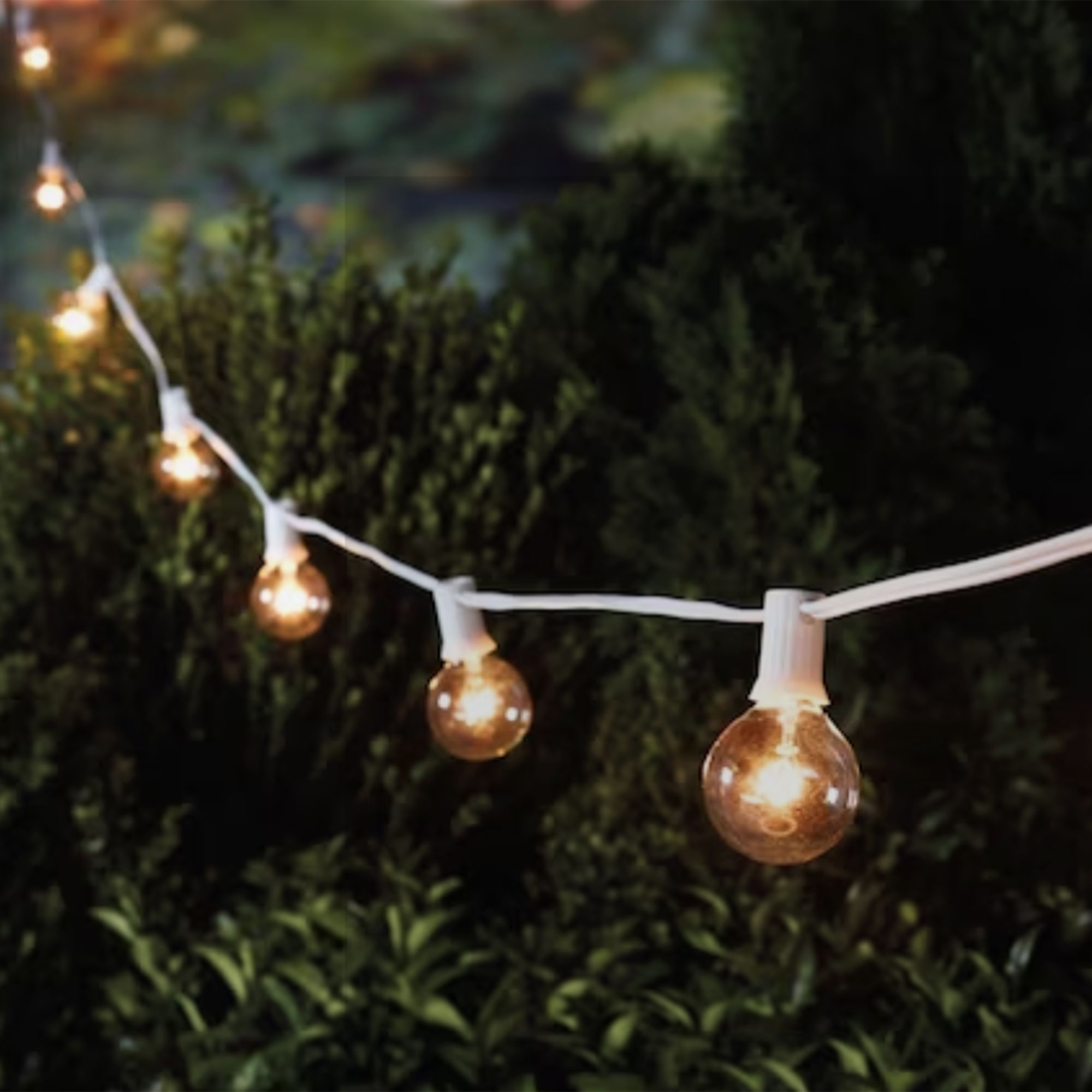How to hang outdoor string lights – 4 safe and secure ways
String lights can totally transform our outdoor spaces, allowing us to enjoy them long after sundown
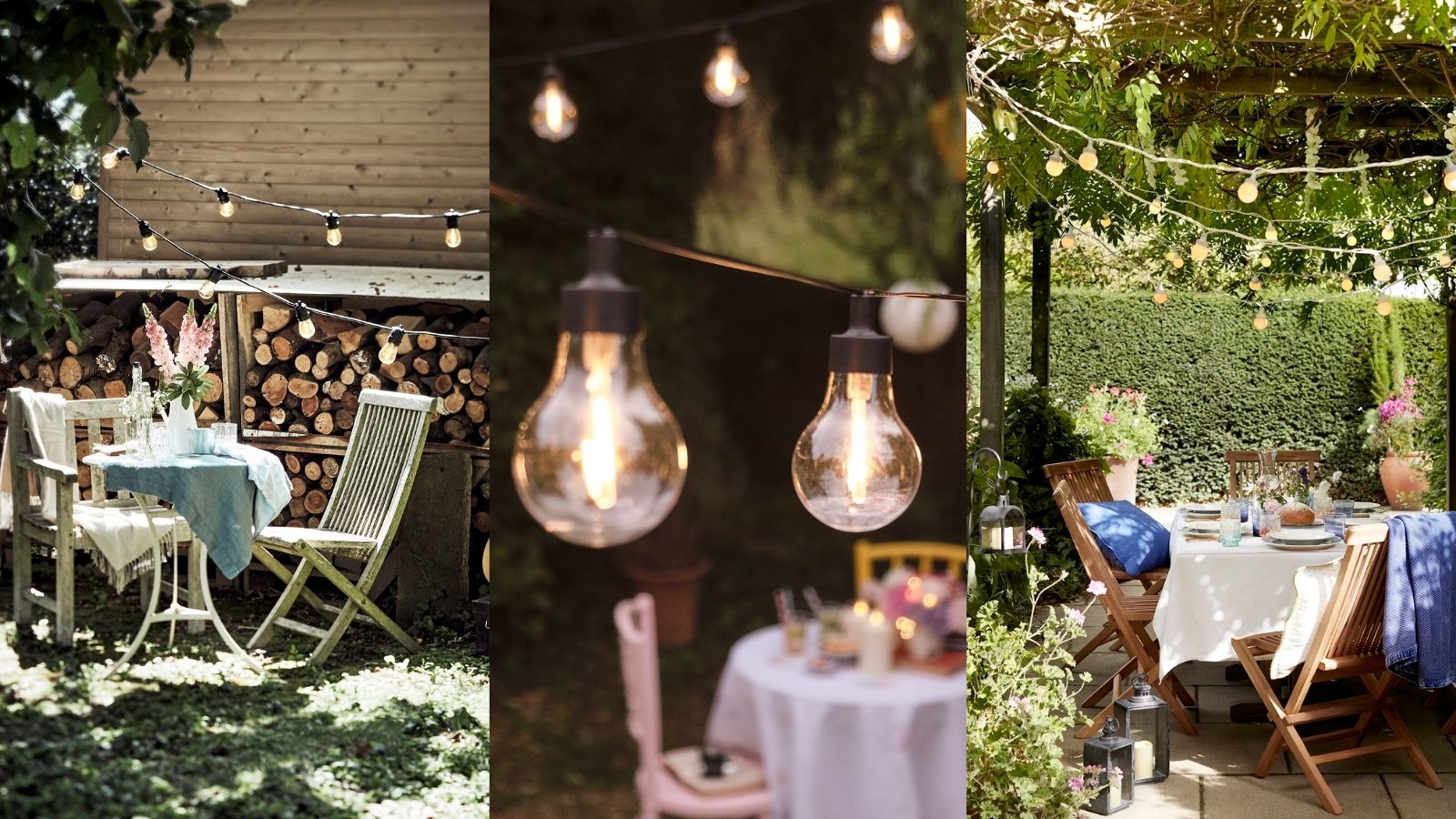

As the weather warms up, many of us are looking for ways to spruce up our outdoor spaces so that we can enjoy spending more time in them – and one of the best ways to do this is to hang some outdoor string lights.
This brings instant atmosphere, but planning and installing garden lighting isn't always as quick and easy as we would expect. Planning out your backyard string light ideas carefully, as well as using the best tools and fittings for the job, is key to creating a cozy and inviting feature.
Whether you wish to hang lights on a pergola or railing, create a free-standing structure around a patio, or simply want to try some inexpensive, removable solutions, we have all the no-fail options to try.
How to hang outdoor string lights
Outdoor string lights encompass outdoor lighting of different sizes, from more delicate fairy lights associated with the holiday season to those with larger, Edison-style bulbs.
Consider solar garden lighting options, too, as then you can reach areas of your yard where you don't have any electrical power. Measure well, and if using electric lights, start from an outlet to avoid loose cords across pathways.
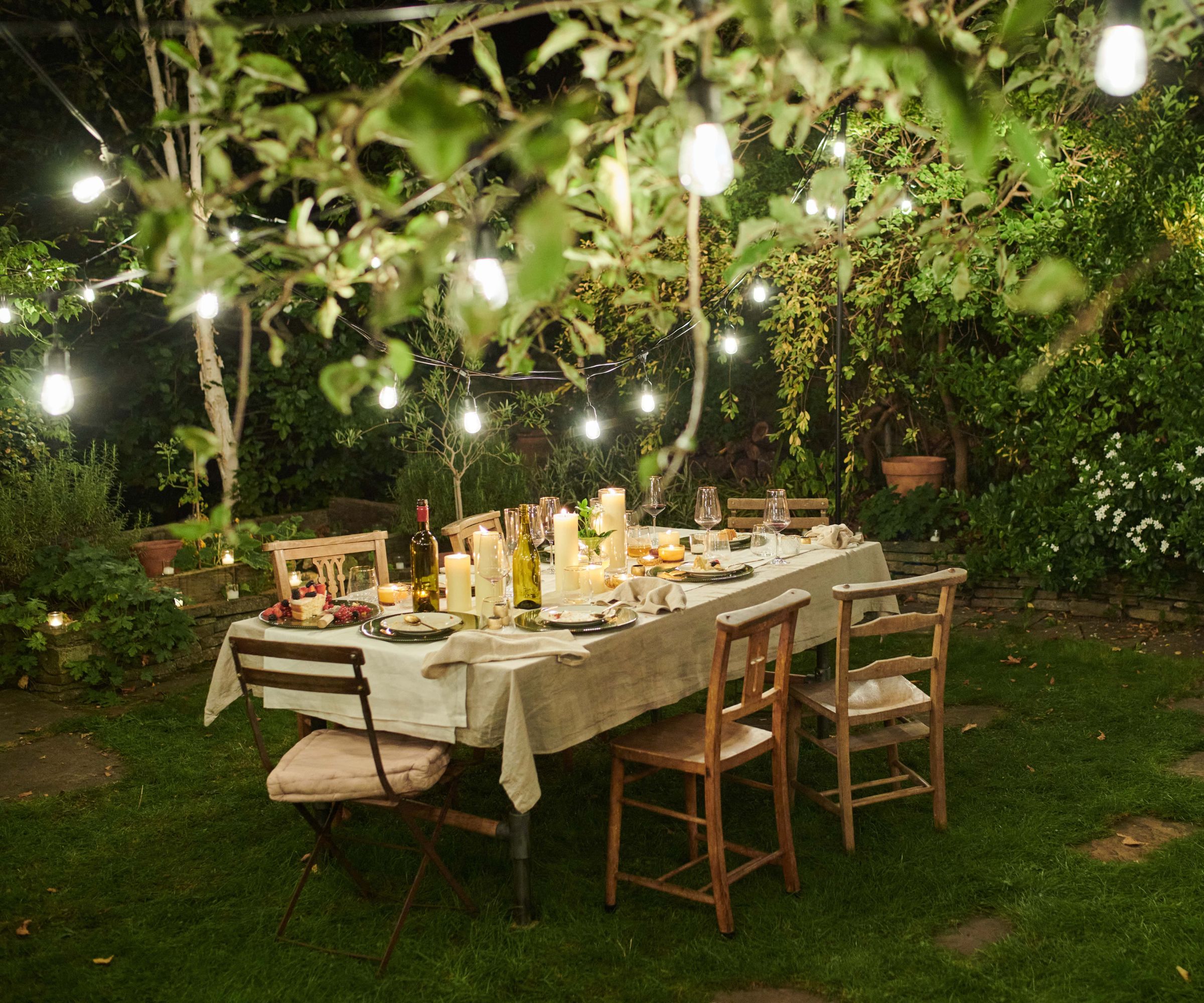
1. Hang on a pergola or fence
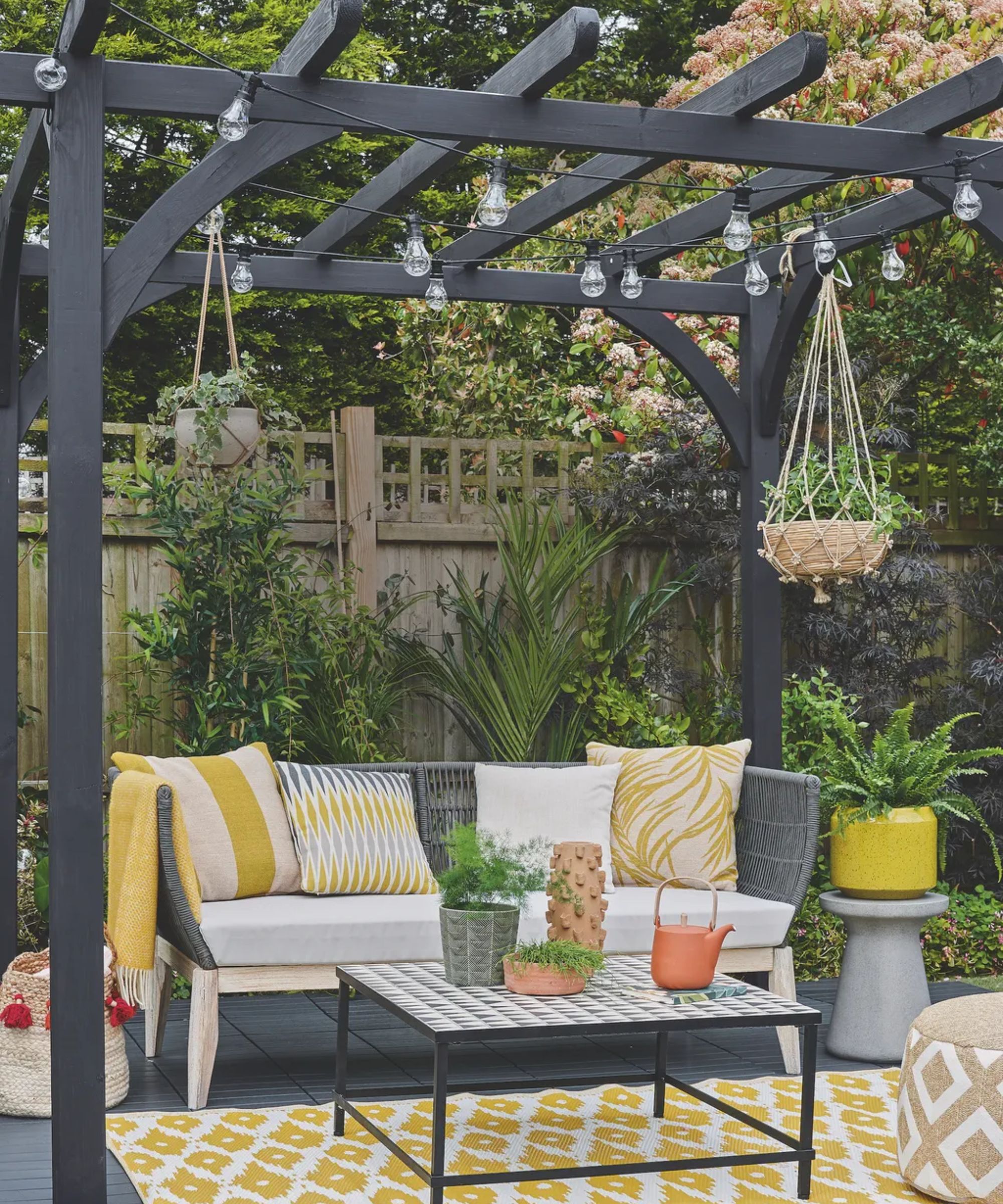
Adorn a pergola, arbor, or archway with string lights by attaching screw-in hanger hooks, available at Amazon, overhead. This is a great way to create zones in your garden and make the most of your outdoor seating.
Alternatively, you can use your privacy fence to hang string lights, creating a lovely border all the way around your plot. You can use screw-in hooks, like the ones below, which have a buckle feature that holds cables securely in place. Place the hooks on fence posts and thread your lights through.
To make them extra secure, David Skulbru, project manager at Alfred's Roofing recommends using a cable guide, such as this one from Amazon, or a taut wire beneath which you can clip your lights. This organizes them neatly and provides additional support to your backyard lighting.

These hooks have a safety buckle design to prevent hanging items from falling off, and their black painted coating means they blend in nicely with black festoon wires.
2. Use 'no nail' options
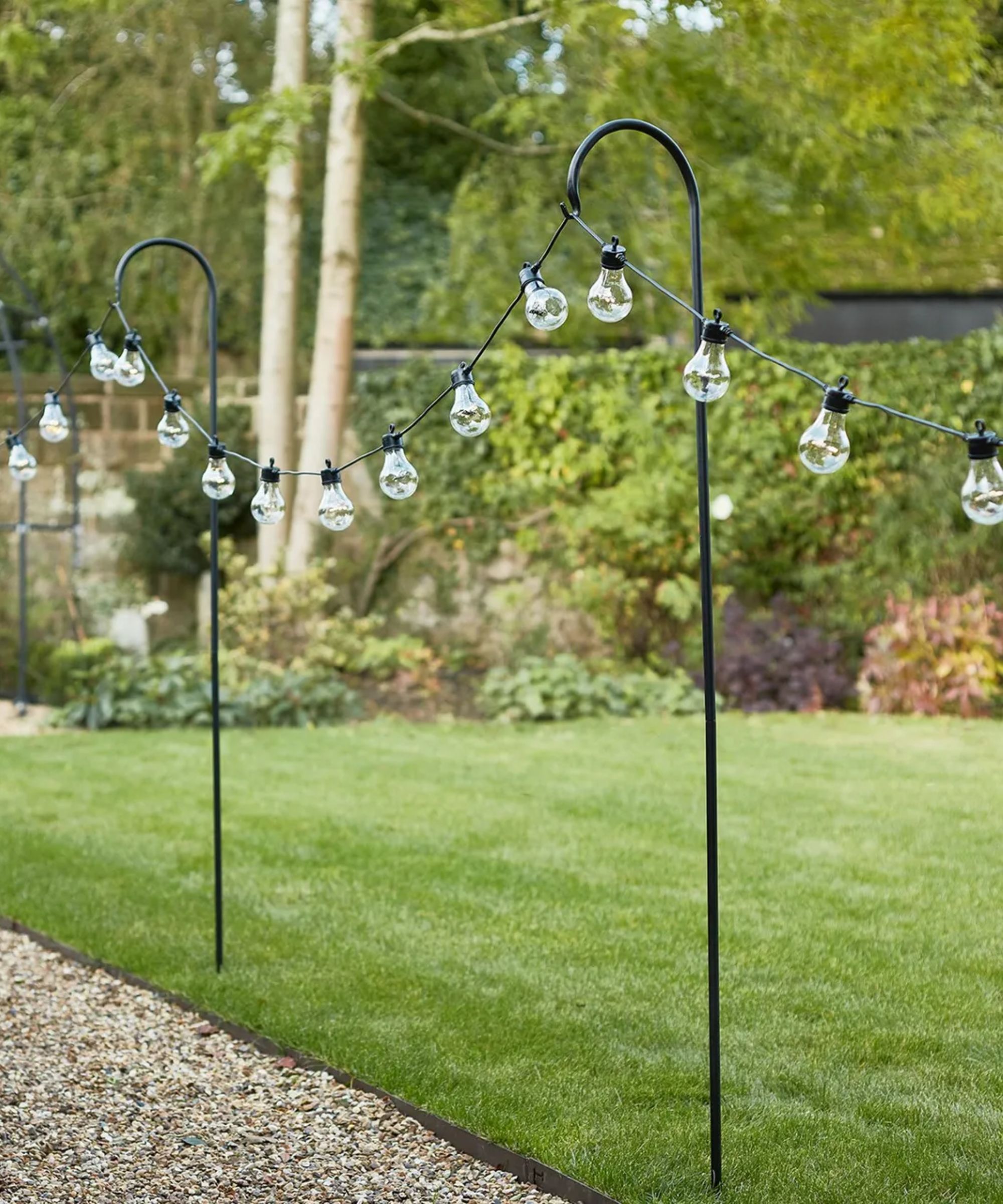
There are a few options that don't involve any nails or DIY, which you might prefer if you only want to keep the lights up over the summer. One of our favorite options is to use shepherd's hooks, such as these from Amazon, which work particularly well as a way to light up either side of a pathway. Plus, they can be moved around easily and used for hanging plants or bird feeders.
'The most obvious way is to wrap the outdoor lights around existing structures, like shrubs, fences, and railings,' comments Gavin Warwick from Boise Landscaping Company. This is an easy solution but may mean you are a little limited when it comes to where the lights can go. Gavin recommends four tools to give you more control over placement:
- Zip ties, available at Amazon – these are easy to use on railings and are quick to remove, plus they won't leave any residue or marks
- Magnetic clips, such as these from Amazon – these attach securely to metal gutters, railings, or frames and hold your string lights securely in place
- Suction cups, available at Amazon – secure onto smooth surfaces, such as windows and glass doors, and move them around as needed
- Adhesive-backed strips, at Amazon – easy to remove and work well on flat surfaces like walls and solid fences
Gutter hooks, also easy to find at Amazon, can be clipped onto gutters and eaves, although they may not withstand very cold temperatures during the winter.
3. Create a freestanding structure

If you want to hang festoon lights over an outdoor dining area, you might choose to use wooden posts and hooks, so that you can position them precisely over the table. This involves planning out the space carefully, digging holes for your posts, and attaching sturdy metal hooks.
Natural wood always provides a more rustic appearance, and if you'd prefer something more industrial, you can opt for black metal poles that have a forked base that can be pushed into the ground.
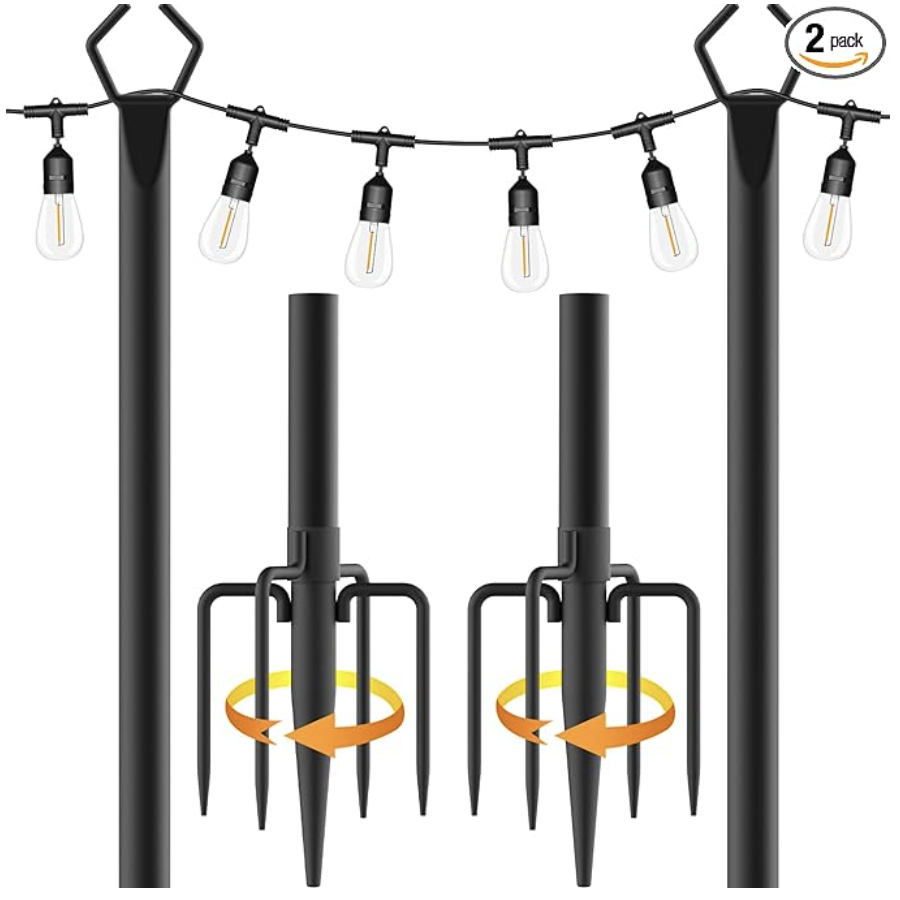
This two-pack of metal poles comes with the necessary tools for installation – the removable claw base makes it easy to put the poles into the ground, and the external retaining rings mean you can easily attach it to a deck or patio.
4. Wrap around a tree
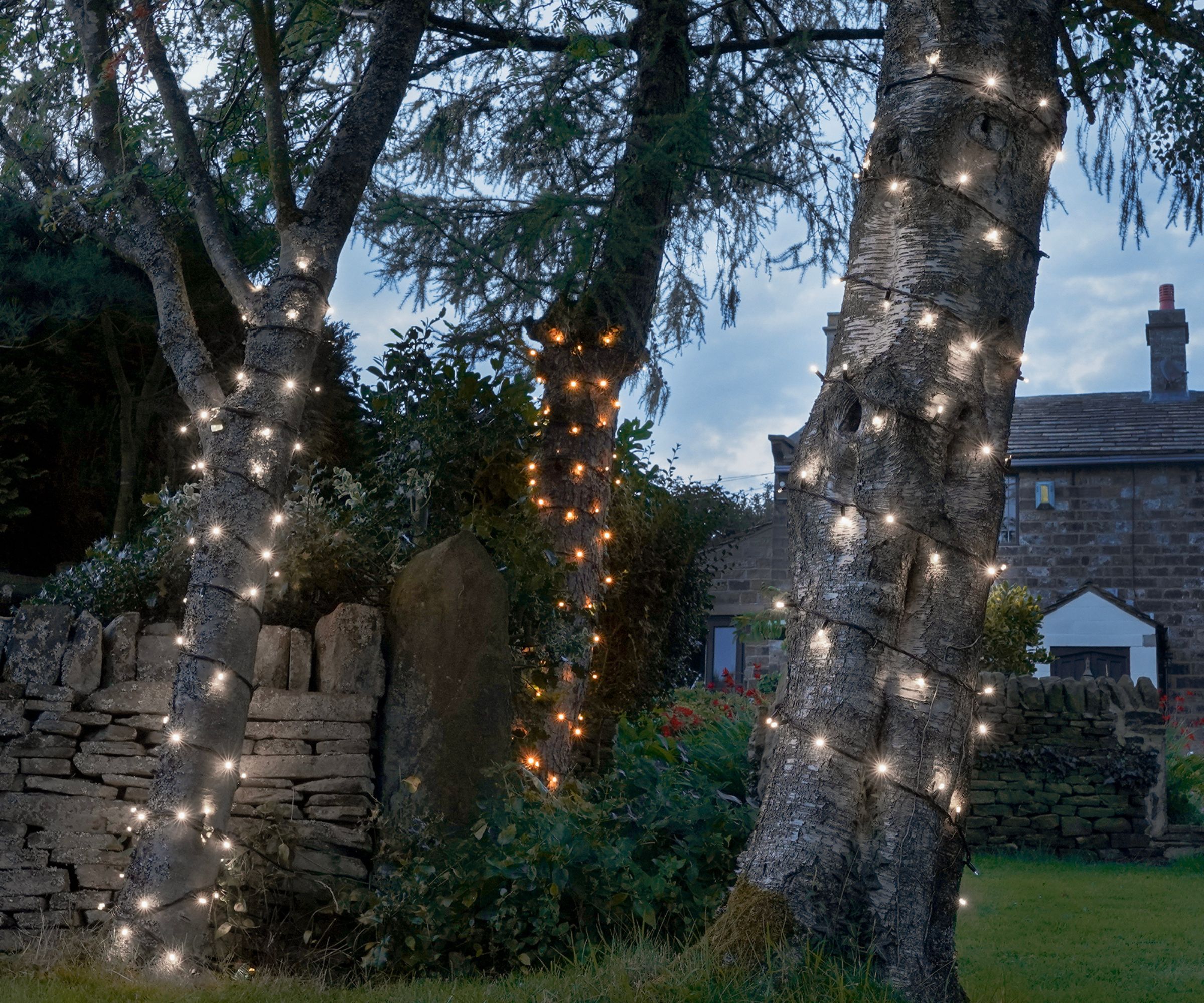
Keep it simple by wrapping lighting around a mature tree. Whether you want to do it for the holidays or leave the lights up all year round, this creates a magical glow without the need for any hooks. It's important to use jute twine, available at Walmart, so as not to damage your tree, as tree care expert and founder of Urban Forest Pro, Lisa Tadewaldt, explains.
'If you are going to hang your string lights onto a tree or any other living thing my recommendation as an arborist is to use jute twine,' says Lisa. 'The reason for using jute twine is that the twine is made of a natural material that will weather and break eventually, whereas if you use a plastic material, it could girdle the tree branches as they grow causing the flow of nutrients and water in the tree to be cut off.'
Lisa also recommends tying the knots loosely around the tree branches, so they allow airflow, and advises against wrapping the light around the branches, so the actual light doesn’t run the risk of girdling the tree.

Lisa Tadewaldt is the founder and owner of Urban Forest Professionals, an arborist company out of Portland, OR, that has been serving that community for over 15 years
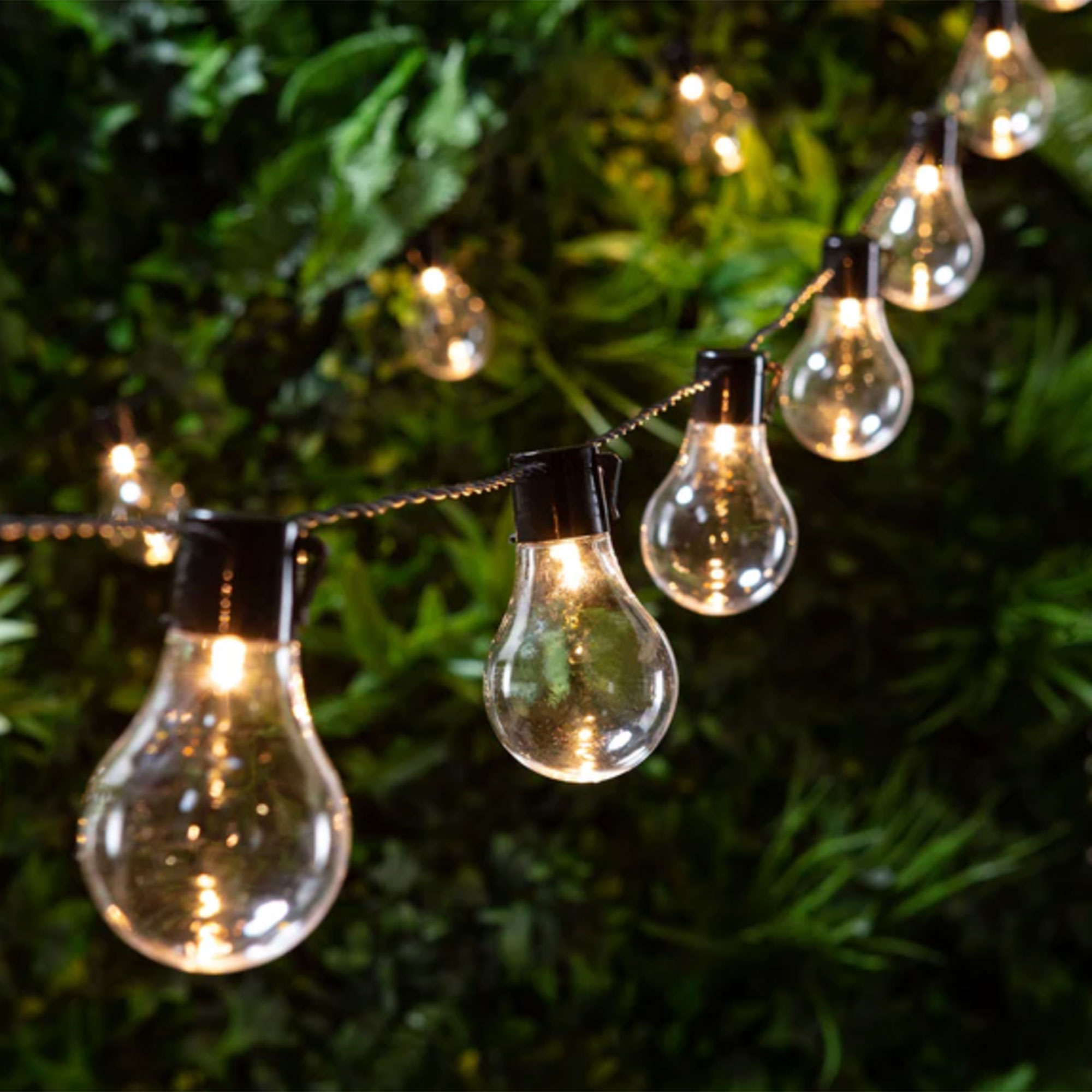
Featuring 60 bulbs on a black wire, these Edison-style bulbs are 46ft in length, and can be connected to other sets to make up to 140ft of lights. Plug-in or battery-powered options are available.
FAQs
What are the mistakes to avoid when hanging outdoor string lights?
'One of the most common mistakes I see homeowners make is using indoor lights outdoors,' says landscape gardener Gavin Warwick. 'Always ensure the string lights are suitable for outdoor use to prevent hazards. And be mindful of the electrical load; don't connect too many strings together, as this could trip your circuit breaker.'
Another good tip is to test the lights are working before hanging them. You don't want to put all the effort in only to find they are faulty.
Outdoor string lights never fail to create a romantic impression, casting light and shadow around our plants. Avoid getting in a tangle, running out of cable, or creating tripping hazards by equipping yourself with the right tools and envisioning how you want the lighting to look. Consider if you would like the lights to be dimmable too, so you always have just the right level of light where you need it.
Sign up to the Homes & Gardens newsletter
Design expertise in your inbox – from inspiring decorating ideas and beautiful celebrity homes to practical gardening advice and shopping round-ups.

Millie Hurst is a freelance lifestyle writer with over six years of experience in digital journalism. Having previously worked as Solved Section Editor at Homes & Gardens and Senior SEO Editor at News UK in London and New York, Millie has written for an array of homes brands including Livingetc and Real Homes and was formerly Senior Content Editor at Ideal Home. She has written and edited countless features on home organization, decluttering and interior design and always hopes to inspire readers with new ways to enjoy their homes. She loves to weave nature-inspired decor and nods to time spent in Italy into her own home.
-
 'The world will not end' – 5 cleaning habits to quit for a happier, easier life, and what to do instead
'The world will not end' – 5 cleaning habits to quit for a happier, easier life, and what to do insteadGet your home sparkling, minus the stress
By Ciéra Cree Published
-
 Martha Stewart's pale pistachio entryway is not just for Easter, it's for life – designers swear by this unique take on my favorite color for year-round calm
Martha Stewart's pale pistachio entryway is not just for Easter, it's for life – designers swear by this unique take on my favorite color for year-round calmThe trend for pistachio green shows no signs of waning
By Jennifer Ebert Published
